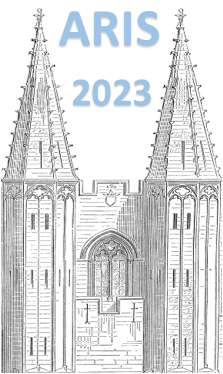Orateur
Description
The proton-rich doubly-magic self-conjugate nucleus $^{100}$Sn and neighboring nuclei are a site of unique nuclear phenomena and a test bed for modern nuclear models. The $^{100}$Sn nucleus is one of the fastest known Gamow-Teller $\beta$ emitters. Due to close proximity of the proton drip line, nuclei with Z>50 and N>50 near $^{100}$Sn form an island of $\alpha$ and proton emitters which decay towards $^{100}$Sn. Alpha decays of proton-rich Te isotopes were proposed to terminate the astrophysical rp-process. Consequently, despite small production cross sections, this region of nuclear chart has been an aim of numerous experimental studies.
In an experiment with the Fragment Mass Analyzer at ATLAS, the super-allowed $\alpha$-decay chain $^{108}$Xe-$^{104}$Te to doubly-magic $^{100}$Sn was observed [1] using the recoil-decay correlation technique. This was the first time that evidence was found for production of $^{100}$Sn in a fusion-evaporation reaction. This observation is an important stepping-stone towards developing a microscopic model of $\alpha$ decay, since it is only the second case of $\alpha$ decay to a doubly-magic nucleus besides the benchmark $^{212}$Po $\alpha$ decay to $^{208}$Pb, and it triggered a flurry of theoretical activity. The decay properties of $^{108}$Xe and $^{104}$Te indicate that in at least one of them the reduced $\alpha$-decay width is a factor of 5 larger than in $^{212}$Po, which confirms their super-allowed character. This could be explained by an enhanced $\alpha$-particle preformation probability due to a stronger interaction between protons and neutrons, which occupy the same orbitals in N=Z nuclei. The Q$_\alpha$-values deduced for the very exotic $^{108}$Xe and $^{104}$Te nuclei are consistent with the doubly-magic nature of $^{100}$Sn. Interestingly, a weak proton-decay branch in $^{108}$I was found in the same experiment. The deduced $^{104}$Sb Q$_p$ value rules out the formation of the Sn-Sb-Te cycle at $^{103}$Sn.
Further experiments to observe more $^{108}$Xe-$^{104}$Te $\alpha$-decay chains and to better characterize the properties of other $\alpha$ emitters in the $^{100}$Sn region are planned. Tests with the recently constructed Argonne Gas-Filled Analyzer, which offers much higher efficiency, will be discussed.
[1] K.Auranen, D.Seweryniak, M.Albers, A.D.Ayangeakaa, S.Bottoni, M.P.Carpenter, C.J.Chiara, P.Copp, H.M.David, D.T.Doherty, J.Harker, C.R.Hoffman, R.V.F.Janssens, T.L.Khoo, S.A.Kuvin, T.Lauritsen, G.Lotay, A.M.Rogers, J.Sethi, C.Scholey, R.Talwar, W.B.Walters, P.J.Woods, and S.Zhu, Phys. Rev. Lett. 121, 182501 (2018)
This material is based upon work supported by the U.S Department of Energy, Office of Science, Office of Nuclear Physics, under contract number DE-AC02-06CH11357. This research used resources of ANL's ATLAS facility, which is a DOE Office of Science User Facility.

